Boats
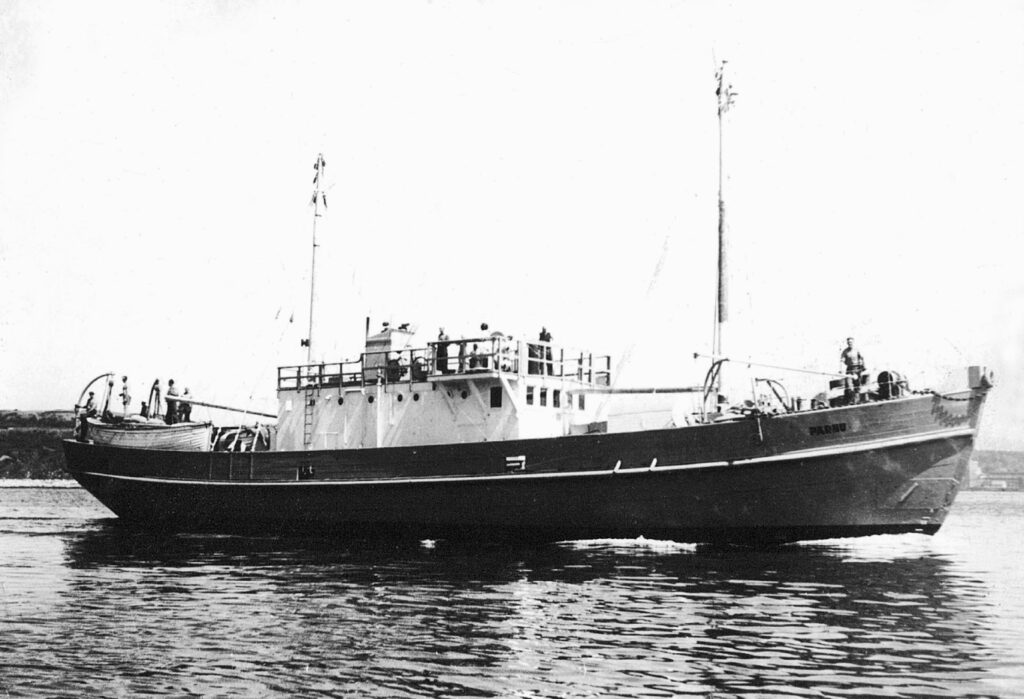
The Pärnu in Malmö, Sweden
Pärnu
In fall 1944, a group of fishermen from Raeküla, south of Pärnu, escaped from Estonia with their families, settling in Källvik refugee camp in Sweden. They became successful fishermen there but felt insecure after the Swedish government began pressuring them to return to their Soviet-occupied homeland.
The fishermen and their relatives pooled their savings and in 1948 bought a 115-foot-long (35 meter) wooden minesweeper in Västervik, south of Stockholm. The 200-ton ship (other sources report 250 tons), built in Canada in 1942, did not have an engine, so a 500-HP diesel engine was ordered from military surplus in England. The new owners christened the ship the Pärnu, and they planned to sail it to Canada.
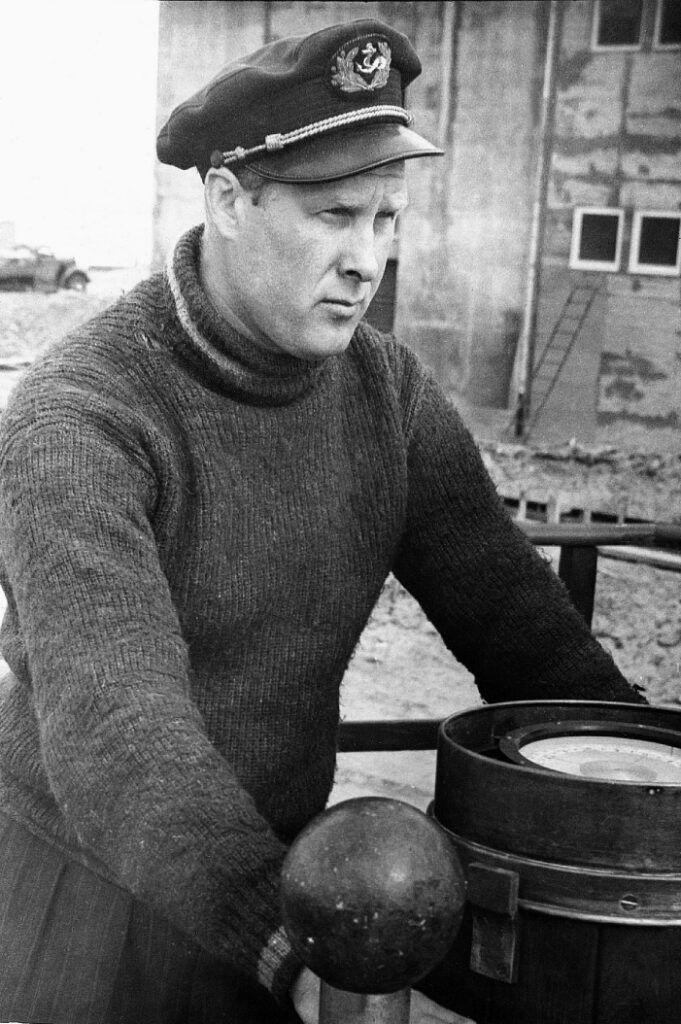
Captain Jakob Suksdorf with the ship’s compass.
In late April 1949, with preparations nearly complete, the Pärnu began sailing to Malmö under Captain Jakob Suksdorf of Käsmu, who had graduated from the 1939 class of master mariners at Tallinn Maritime School. There were 50 men, 50 women, and 54 children on board. They included 128 Estonians, seven Poles, eight Hungarians, five Latvians, and other nationalities. Only nine had visas for Canada.
On May 5, the Pärnu stopped in Kalmar, Sweden. On the next leg to Malmö, the engine was badly damaged and needed repairs, but a London dockworkers’ strike delayed deliveries of the spare parts. When the ship reached Malmö on May 20, a reporter for Stockholms-Tidningen Eestlastele asked Captain Suksdorf where the boat was headed. “When we are at sea, it will become clear which direction is best,” he replied vaguely. He likely didn’t want to attract attention from the Swedish authorities or Soviet operatives.
The Pärnu began the long Atlantic crossing on July 16, 1949. Passenger Siina Kembi recalled in a 1985 interview, “There was a big storm, and the little boat was under the waves more than above them. Most of the passengers were seasick, even some of the crew.” Her 9-year-old daughter, Marje Kembi, remembered that she made a nuisance of herself by eating in front of the seasick adults. She recalled that men on board fired shots to scare the whales and threw suitcases overboard to lighten the load.
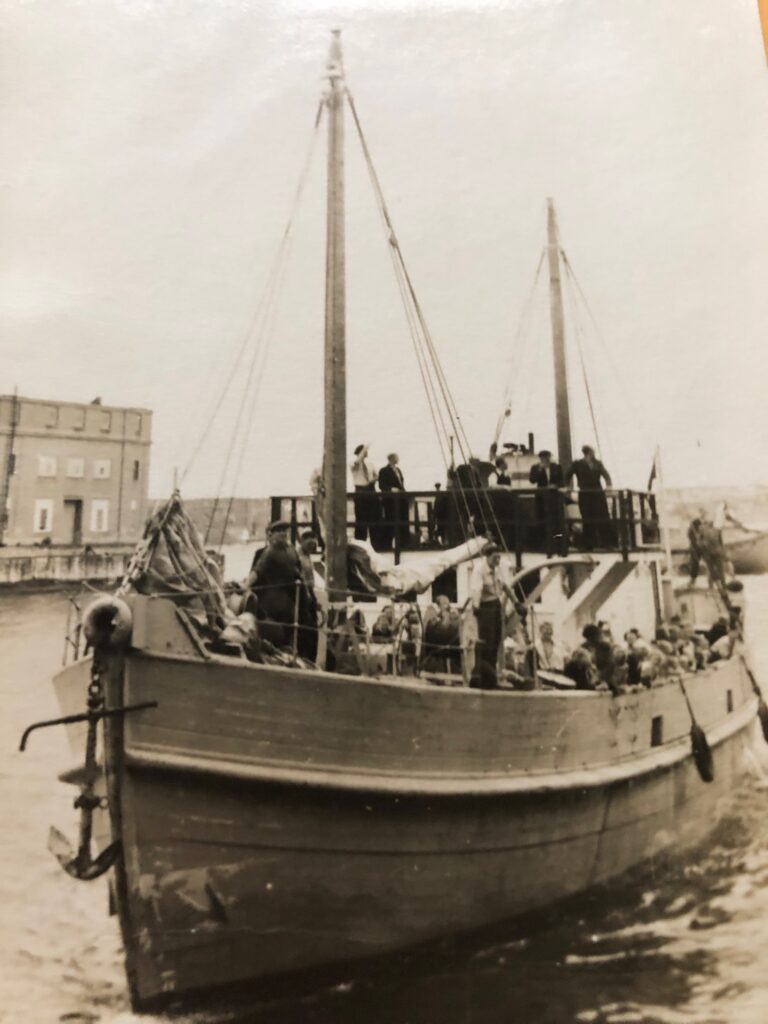
The Pärnu reaches Canada following a 16-day voyage across the rough Atlantic Ocean.
The ship almost ran aground near Sable Island, Nova Scotia, where the refugees spotted wild horses. On August 2, the Pärnu reached Halifax following a transatlantic voyage of only 16 days. Immigration officials were vigilant in enforcing regulations and promptly issued deportation orders to those without visas. Two weeks later, however, the Canadian Department of Mines and Resources decided to admit the refugees, stating, “The passengers on this vessel, almost without exception, are of a particularly desirable type of Baltic immigrant.” The group was held in detention in Halifax until the end of September, when almost everyone was granted residency permits.
Some of the refugees, including Captain Suksdorf and his family, remained in Halifax, but most settled in Toronto and Vancouver. The Kembi family moved to Vancouver but were unable to find work as fishermen because they were not citizens. Instead, Jakob Kembi and Theodor Wesik became successful commercial and residential builders.
In February 1951, the Pärnu was sold to Captain E. Jourdain, a seal trapper from Quebec, and renamed the Ungava.
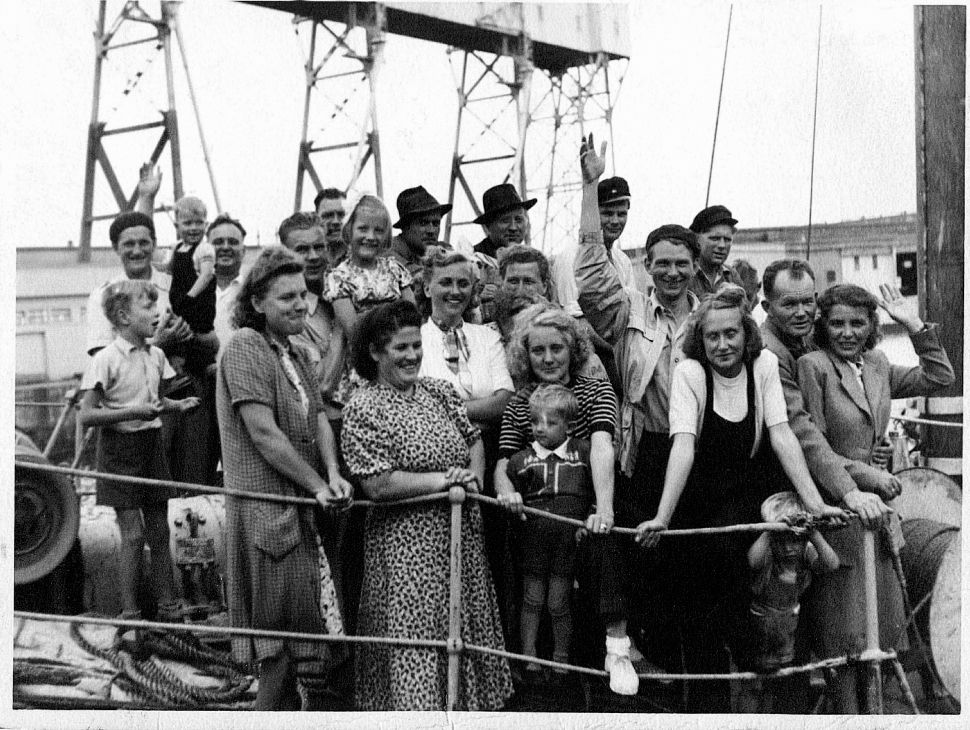
Passengers on the Pärnu arrive in Halifax, Canada.
Known crew and passengers:
- Captain Jakob Suksdorf
- Artemi Väär (Vaer)
- Theodor and Meeta Wesik
- Eduard Jaani
- Osvald Kuutan
- Jakob and Siina Kembi, and their children Kärt, Marje, and Jaan
- Arkadi Mirk, and Liis, Andrei, Ella, and Lia
- Jaan and Vaino Einola
- Friedrich Perens, J. Perens, and Jaan Perens
- Elmar Magnus and Marta
- Reinhold Raadik and children Aili and Mart
- Kaalep Ots
- Aleksander Linnamäe, M. Linnamäe, and Urve Linnamäe
- Adolf, Evi, and Amanda Vaha
- Ants Raidma
- Bernhard and Tuuli Silmer, and their son, Johannes
- Ardaljon Mäekivi
- Jüri Brutus
- Heinrich Toots
- Robert and Helmi Toomsalu
- Eduard and Elsa Vuht, and their daughter Kristi, 6
- Alex Maritis

Passengers were crammed into narrow bunk beds.
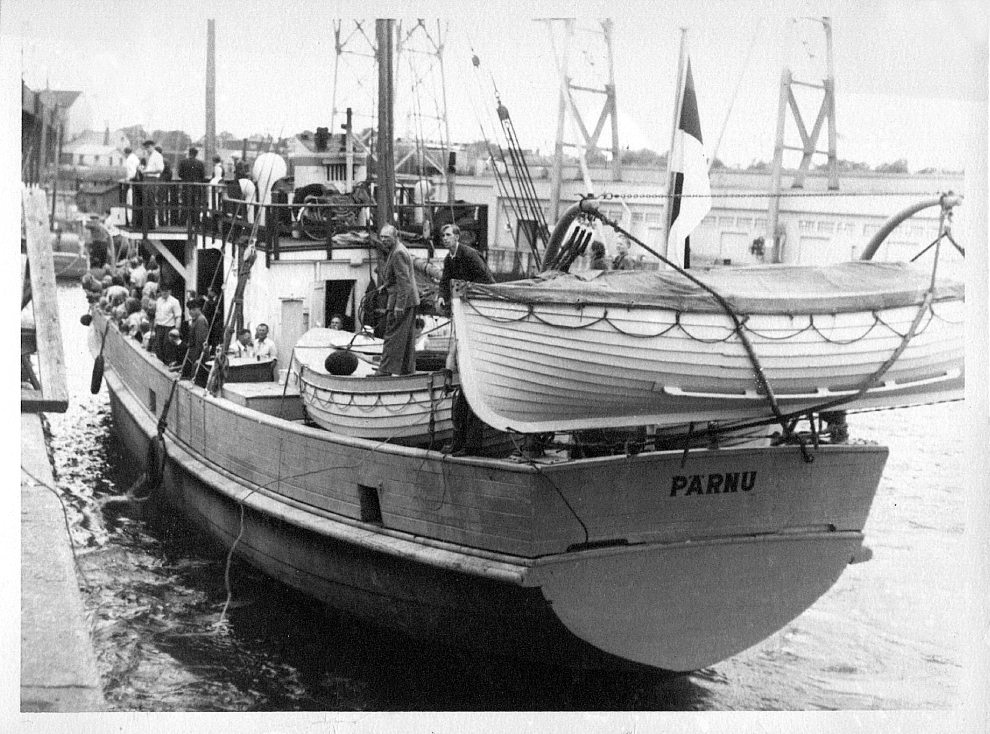
The Pärnu in Halifax, Canada.

Captain Suksdorf informed Swedish officials that he was sailing to Norway, but in fact he headed to Canada. Toronto Star, August 6, 1949
The Expositor, Ontario, October 10, 1949
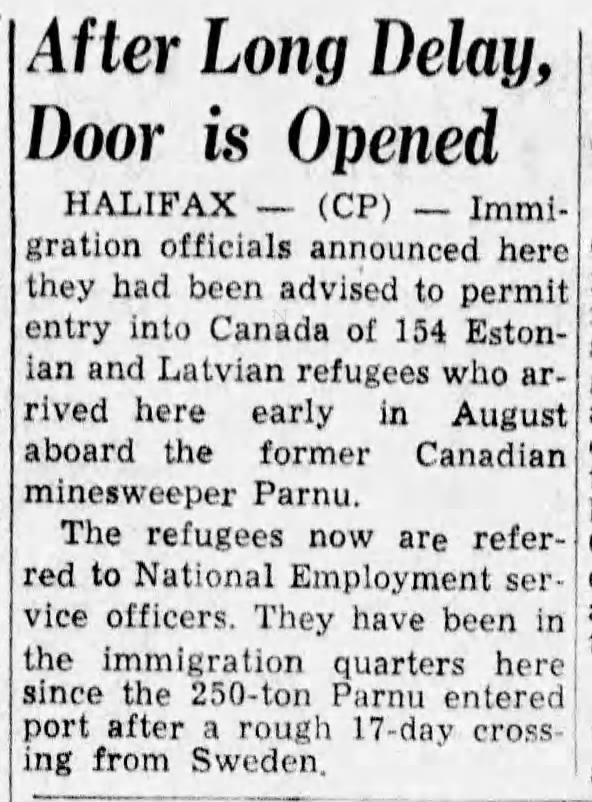
Photographs reproduced with permission from the Estonian Maritime Museum.
Kristi Vuht Allpere tells the story of her family escaping from Estonia and then Sweden. Kristi was just 18 months old when they left Estonia and six years old when they left Sweden for Canada on a boat called the Pärnu. In this video, Kristi recalls the journey and how the family spent 16 days in their “luxurious” berth.
